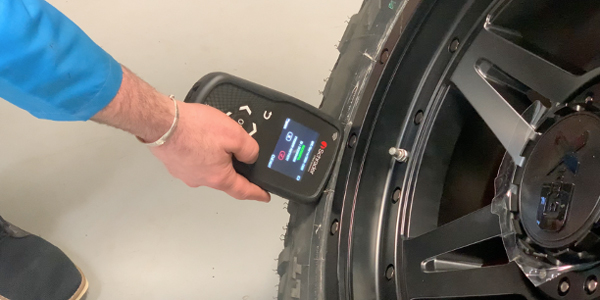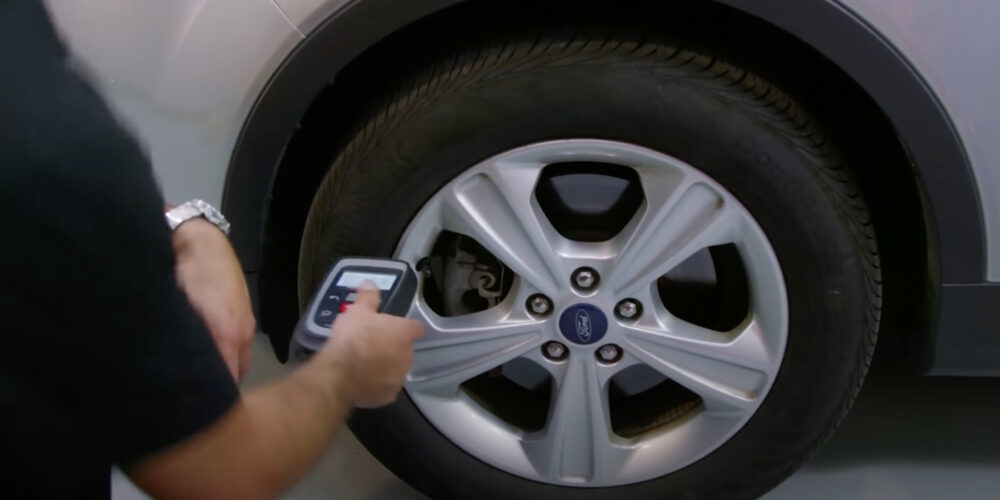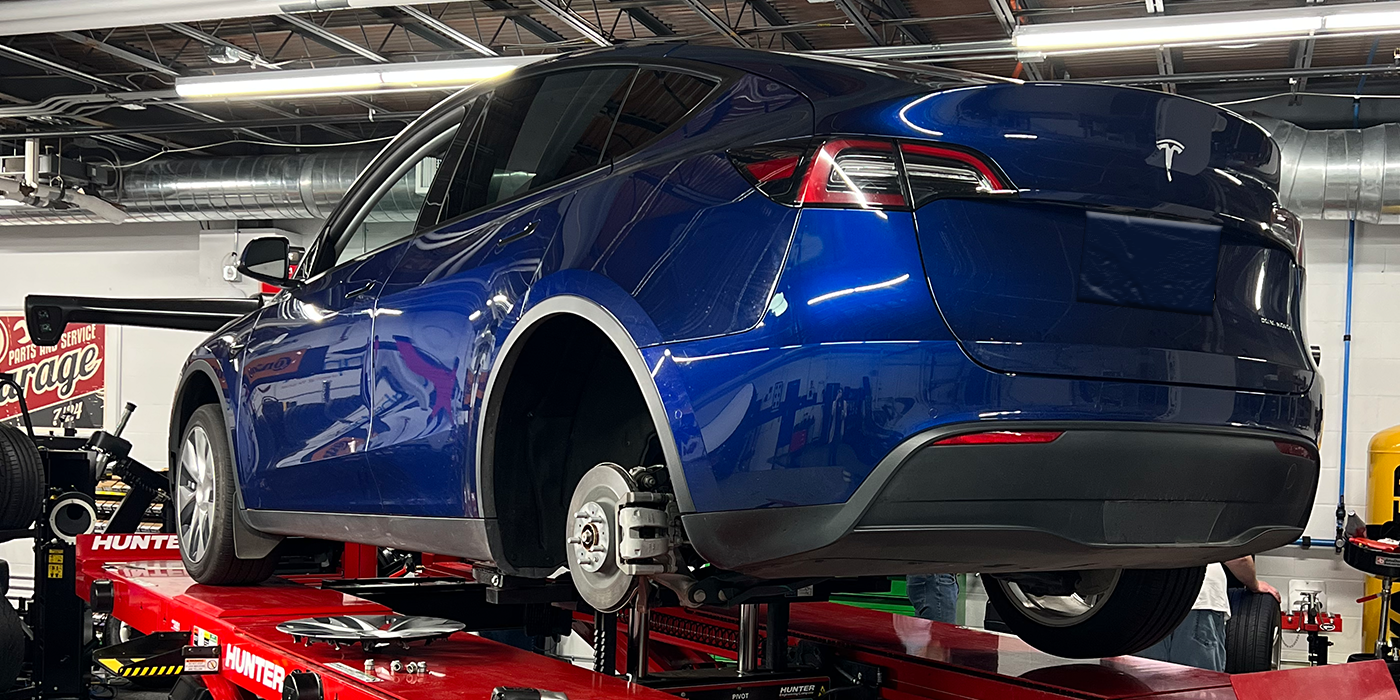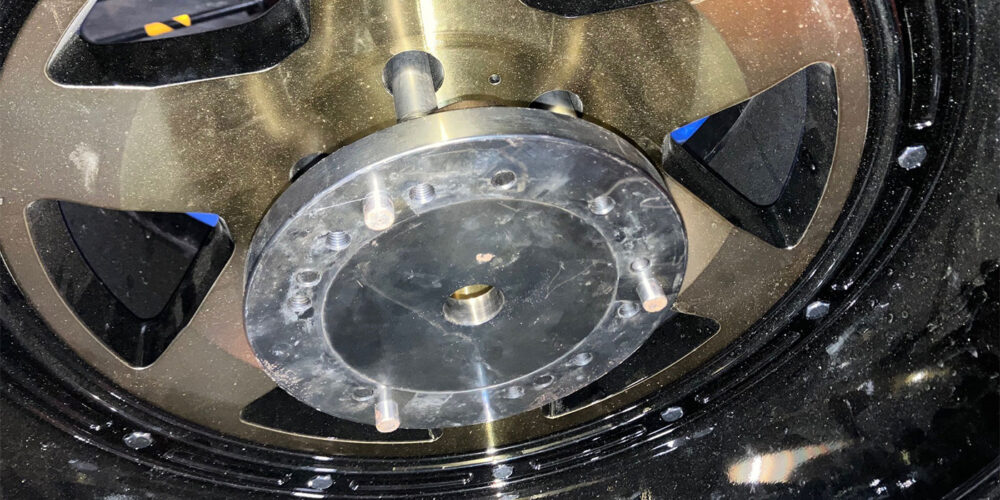During my last training session, I received a very interesting question: “When testing a TPMS sensor with an LF tool, is the response time an indicator of remaining battery life?” Thanks to the students at NBCT Technical College; obviously, they came prepared for the training.
Back to the question – the short answer is “no.” When a sensor is activated with a TPMS diagnostic tool or through pressure drop, the signal is transmitted for just a fraction of a second. If the response to the tool is quick or slow, it will still use the same amount of battery, therefore the response time is not an indication of battery level. We need to keep in mind that there are various rules that regulate the radio signal transmitted by a TPMS sensor. Frequency, range, and duration are all subject to FCC regulations, which means that regardless of the sensor – new or old, OE or aftermarket – TPMS sensors are transmitting at the same signal strength. Against popular belief, there are no aftermarket sensors more powerful than others (within the FCC regulations).

Here are some of the ways that you can identify and resolve factors that may be causing an unusually long response time:
- TPMS Tool Positioning –The sensor cannot reply to an activation signal if the signal doesn’t reach the sensor in the first place. It’s important to get the TPMS tool as close as possible to the sensor. Too much distance can make it harder for the sensor to decode the tool activation signal and create a longer response time. TPMS sensors are usually attached to the valve stem (except for the banded sensor used on some Ford vehicles). To efficiently activate a sensor, position the tool on the sidewall of the tire, just over the valve stem, where there is the least distance between the TPMS tool and sensor. Some aftermarket wheels with large offsets can be a challenge, as they are designed with a significant distance between the valve and the tire sidewall. In some cases, technicians can activate the sensor by placing the tool on the tread area of the tire, just over the sensor location.
- LF Signal Block or Restriction –Objects or material located between the tool and the sensor can create restriction or even block the signal, causing the tool to time out and display the message “sensor not found.” Metal is one of the materials that can block the signal; therefore, when technicians position the tool on the tip of the valve stem or directly on the rim, they increase the restriction between the tool and the sensor. The type of tire used can also be a factor; for example, a 13-ply sidewall vs. a 7-ply sidewall can create restrictions, making it harder for the sensor to respond to the tool activation signal.
- TPMS Cross Talk and Other RF interference – Often referred to as RF clashing, this occurs when the RF cannot be decoded because two or more sensors within range transmit at the same time. Performing vehicle relearns and sensor testing with the vehicle parked away from other vehicles, and ensuring no other TPMS sensors are nearby (like a second set of rims and tires), is recommended. Keep in mind that some aftermarket sensors may appear more sensitive to the TPMS tool activation signal compared to OE sensors. TPMS cross talk can occur when a TPMS sensor located on one side of the vehicle responds to a signal even though the tool is pointing at a tire on the other side of the vehicle.
- TPMS Sensor Communication Protocol –Different models from the same make can share the same TPMS communication protocol. However, there are also instances where vehicles from the same make will use similar communication protocol yet different in data transfer. For example, vehicles can use the same communication protocol but function on different frequencies. If the technician selects the correct make, model, and year, but chooses the wrong frequency, the TPMS tool might take longer than usual to display the information on the screen. Fortunately, many TPMS tools today identify the discrepancy by showing the data on the screen in a different color. Yet, technicians need to remain vigilant; if the TPMS sensor is programmed to the wrong frequency, the TPMS tool can still read the sensor data, but during the relearn process, it will be impossible for the vehicle to capture the transmission signal.
By following these tips, you not only optimize your time in the bay but also enhance efficiency during TPMS malfunction troubleshooting. These practices ensure that you extract the full potential of your TPMS diagnostic tool. By staying attentive to sensor communication protocols, minimizing interference, and adopting precise tool positioning, you’ll be well-equipped to tackle TPMS challenges effectively and make the most of your diagnostic processes.
Yanick Leduc has been a technical trainer for more than 20 years. Yanick started working in the automotive industry in 1992 and his career at Schrader TPMS Solutions began in 2017 when he joined the company as a technical training and support specialist. Since January 2021, he has been leading Schrader’s TPMS Training Team globally. He says his passion for digital learning has inspired Yanick to enhance Schrader’s digital training activities with the launch of www.TPMSAcademy.com and the delivery of multiple webinars.














